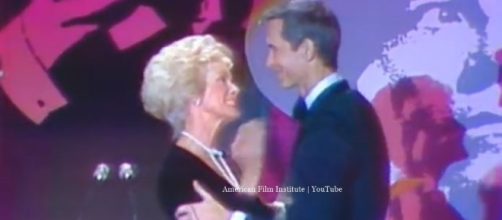"#MeToo" - the international movement against sexual harassment that went viral last year when movie mogul Harvey Weinstein's abuses came to light. ABC reported that Harvey Weinstein pleaded not guilty to new sexual assault charges this week. These charges were foreshadowed 60 years ago by Alfred Hitchcock's “Vertigo.” So says BBC journalist Nicholas Barber, but he doesn't go far back enough.
Magnificent obsession
Jimmy Stewart's character in “Vertigo,” hell-bent on controlling a woman resembling one he lost to suicide, pressuring her to emulate the deceased, is only one in a long line of men determined to dominate women.
When it comes to chilly stories of male supremacy, there are earlier and better examples that fill the pre-history of Hitchcock's movie.
No signs of life
Rene Magritte's “The Menaced Assassin,” painted in 1927, is a barefaced view of male authority over a female. What you see is a nude woman splayed on a couch in a room with six fully clothed men complete with hats and overcoats, standing nonchalantly by, one holding what looks like a baseball bat. What's more, this nightmarish image is rendered in a deadpan way. The absence of expression on the men's faces has the effect of denying the reality of what you see. Such playing with reality is another reason that the BBC journalist cited “Vertigo.” Hitchcock's direction of scenes played with life and illusion as if he were shooting marbles.
But Magritte did this, too, except earlier and more coldly. Yet even he can't be credited for first foreshadowing the MeToo movement.
The art of rape
Magritte's painting was inspired by the French movie “Le Mort Qui Tue” (The Murderous Corpses) made in 1913, which also wavers between fantasy and reality. It's fair to say, then, that MeToo was in the wind not only before Hitchcock, but also before Magritte. And if you're talking about men dominating women in the arts, you'd need to add in the ton of rape pictures painted through recorded time. Clearly, movie makers aren't the only actors in this story. But wait, neither are painters. Some who write about art can also be said to have poisoned the air that gave rise to MeToo.
I'm thinking of Frederick Hart, an authority on 15th-century painter Antonio Correggio, famed for “Jupiter and Io,” which describes a woman being raped by a god disguised as a thunderhead. To hear Hart tell it, “the image is so frank, so open, so direct, so real, that it cannot conceivably be classed as pornography.” By that logic, any picture of a man forcing himself on a woman is good clean fun as it's frank and open and direct.
Seeing assault as aesthetic
Also coming to mind is what art expert Robert Simon said of Paul Cezanne's surprisingly coarse paintings of rapes and other atrocities. Praising them, he waxed on about their “aesthetic density” and “idiosyncratic commingling.” All of which seems to illustrate the credo of the feminism pushing group the Gorilla Girls: The history of art is the history of power.


